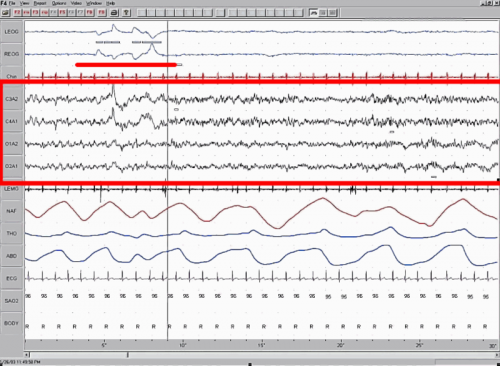January 27, 2017 report
Mouse study shows REM sleep selectively prunes and maintains new synapses

(Medical Xpress)—A small team of researchers with affiliations to the New York University School of Medicine and Peking University has found evidence of pruning and maintenance of synapses during REM sleep. In their paper published in the journal Nature Neuroscience, Wei Li, Lei Ma, Guang Yang and Wen-Biao Gan describe their study of mouse brains and REM sleep, what they learned and how it might apply to humans.
Prior research has suggested that REM sleep is a mechanism used by the brain to manage memory retention—insignificant information is wiped away while that deemed important is maintained to make it more permanent. But still unclear was what actually happens with brain cells as this process is carried out. In this new effort, the researchers studied mouse brain cells under different sleep conditions to learn more about what occurs.
Test mice were taught to run on a tread mill and were then divided into two groups. One group was allowed to sleep normally that night while the other group was repeatedly interrupted to prevent them from experiencing REM sleep. The team then extracted brain cells from both groups and studied them under a microscope. They found that the mice that had normal REM sleep had a higher degree of pruning of new dendrite spines (small spine-like growths that appear and disappear on neural dendrites) than did those that were deprived. Prior research has shown that neural spines strengthen or loosen the connection between neurons—pruning helps to remove memories of things that have no meaning in our lives, like the noise of cars passing on the drive to work. Continued maintenance, on the other hand, leads to memories becoming more permanent.
The research team also looked at the degree of pruning that happened during REM sleep at different mouse ages and found that pruning continued throughout the life of a mouse and that pruning and maintenance over time led to larger and stronger spines, suggesting stronger memory retention. They also found that calcium channels appeared to play a role in pruning during REM sleep—their levels increased and pruning activity ceased if the channels were blocked.
More information: Wei Li et al. REM sleep selectively prunes and maintains new synapses in development and learning, Nature Neuroscience (2017). DOI: 10.1038/nn.4479
Abstract
The functions and underlying mechanisms of rapid eye movement (REM) sleep remain unclear. Here we show that REM sleep prunes newly formed postsynaptic dendritic spines of layer 5 pyramidal neurons in the mouse motor cortex during development and motor learning. This REM sleep-dependent elimination of new spines facilitates subsequent spine formation during development and when a new motor task is learned, indicating a role for REM sleep in pruning to balance the number of new spines formed over time. Moreover, REM sleep also strengthens and maintains newly formed spines, which are critical for neuronal circuit development and behavioral improvement after learning. We further show that dendritic calcium spikes arising during REM sleep are important for pruning and strengthening new spines. Together, these findings indicate that REM sleep has multifaceted functions in brain development, learning and memory consolidation by selectively eliminating and maintaining newly formed synapses via dendritic calcium spike-dependent mechanisms.
© 2017 Medical Xpress
















